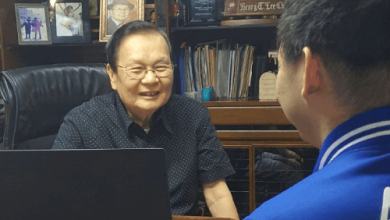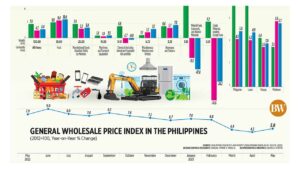Hidden pandemic victims: Filipinos get sick or die, but not from COVID-19

— PHILIPPINE STAR/ MICHAEL VARCAS
By Jenina P. Ibañez, Senior Reporter
MEDICAL DOCTOR Frederic L. Ting remembers when his patient, a 33-year-old woman, was diagnosed with breast cancer in late 2019, months before Manila, the capital and nearby cities and provinces were locked down to contain a coronavirus pandemic.
She was due to show up at the doctor’s office in mid-March of the following year, but had to postpone it after the first lockdown was imposed that month. She managed to see an oncologist only in September 2020.
“Unfortunately, the early stage two breast cancer had already spread to the lungs and liver,” Mr. Ting said in a virtual interview via Zoom.
“This was a typical scenario that many of our patients experienced because of the treatment delays caused by this pandemic.”
The coronavirus disease 2019 (COVID-19) has sickened 3.7 million and killed almost 60,000 Filipinos. Treatment delays caused by lockdowns and public health fears also worsened other illnesses, including cancer.
About 475 million people have been infected by COVID-19, while deaths reached over six million worldwide, according to the Worldometers website, citing various sources including data from the World Health Organization.
Early stage breast cancer is curable, Mr. Ting said, but when it has worsened, the goals change from being cured to controlling the cancer.
These treatment delays could set back the county’s public health in the long term. And as Filipinos get sicker, the Philippine economy, already scarred by the pandemic, could worsen.
About a third of more than a hundred cancer patients at St. Luke’s Medical Center in Quezon City and Taguig experienced treatment delays in 2020, according to a study by the Cancer Reports journal.
The Philippine Society of Medical Oncology had asked doctors to prioritize treatment based on the patient’s cancer status to avoid coronavirus infection. They should consider shorter treatment if possible, or delay chemotherapy for patients in deep remission.
Filipinos received delayed treatment for various non-COVID illnesses because of limited healthcare supply. Some of them lost their jobs and could no longer afford drugs whose prices have also risen.
The country’s limited healthcare facilities and manpower were transferred to coronavirus patients especially during an infection surge.
“Many of the machines used to diagnose tuberculosis were transferred for COVID-19 use,” Valerie Gilbert T. Ulep, a research fellow at the Philippine Institute for Development Studies (PIDS), said by telephone.
The Philippines could only offer 1.2 hospital beds for 1,000 people, the government’s health facility development plan showed.
“Every time a surge in coronavirus cases happens, patients infected with COVID-19 eat up valuable space in our hospitals that could have been used to accommodate non–COVID-19 patients,” Mr. Ting said.
“It’s not just the literal space or room, but also the manpower and other logistical functions.”
Although teleconsult services helped during lockdowns, doctors’ assessments were limited in the absence of a physical exam, he said.
Meanwhile, demand for healthcare treatment also declined, not because people were less sick but because they could no longer afford it.
In a study published by The Lancet journal, Mr. Ulep and his co-authors found that disease admissions and several healthcare procedures declined at more than a thousand Philippine hospitals in the first months of the pandemic. This continued to fall short of pre-pandemic levels for the rest of 2020.
The authors found that healthcare treatment for the poorest Filipinos declined at three times the pace for people who had insurance
“In the Philippines, 50% of healthcare services are out of pocket,” Mr. Ulep said in mixed English and Filipino. “If the economy sinks, household income will decline. You will not spend any more for healthcare services.”
LOST WAGESIn poorer countries, he said, income is a big indicator of healthcare use. “That kind of shift is more apparent among the poorer segments of the population.”
Mr. Ting said he had consulted with several patients whose conditions worsened because of treatment delays. “Unfortunately, this significantly decreased their quality of life and their chances of survival.”
Mr. Ulep in his study published by PIDS said the economy could lose P2.3 trillion because of the pandemic. Much of this is due to foregone wages and lost productivity due to untreated diseases and deaths unrelated to the coronavirus.
“And because of the pandemic, the prevalence of cardiovascular diseases, diabetes increased. That will linger throughout the lifespan of that person,” he said.
Socioeconomic Planning Secretary Karl Kendrick T. Chua has said the country is poised to reach upper middle-income country status — an economy with a gross national income per capita of $4,096 to $12,695, according to the World Bank — by end-2022.
Philippine gross national income per capita fell by 11% to $3,430 in 2020 from a year earlier, according to the multilateral lender.
But the country’s healthcare outcomes, such as infant and maternal deaths, don’t match upper middle-income countries, Mr. Ulep said.
“Even if we are transitioning to an upper middle-income country, our health status is actually not that great,” he said. “Because of COVID-19 that might also suffer. That’s how dismal it is. The problem in the Philippines is that the high infant mortality rate is actually because of the large disparity between the poorest and richest.”
He cited the need to boost state investment in public health.
The Philippine Health Facilities Development Plan 2020-2040 aims to provide 2.7 hospital beds to 1,000 people by 2040, requiring 400,000 more beds. Upper middle-income countries, the report said, have 3.8 beds for 1,000 people.
Southeast Asian governments should invest more in their healthcare systems to improve labor productivity and boost economic growth, according to the Asian Development Bank.
“We need to fully implement the Universal Health Care law,” Mr. Chua said in a Viber message.
Senator and presidential candidate Panfilo M. Lacson in January said the law, signed by President Rodrigo R. Duterte in 2019, had not been fully implemented to offer enough hospital beds and medical services because it lacks funding.
Meanwhile, Mr. Ting hopes that more people would get vaccinated against the coronavirus.
“It’s a vicious cycle,” he said. “We spend more resources every time we have a COVID-19 surge in the country, and we should remember the collateral damage of COVID-19 on patients whose conditions worsen because of treatment delays,” he said.
“We have to help each other out so we can end this pandemic soon and hopefully stop the vicious cycle.”




